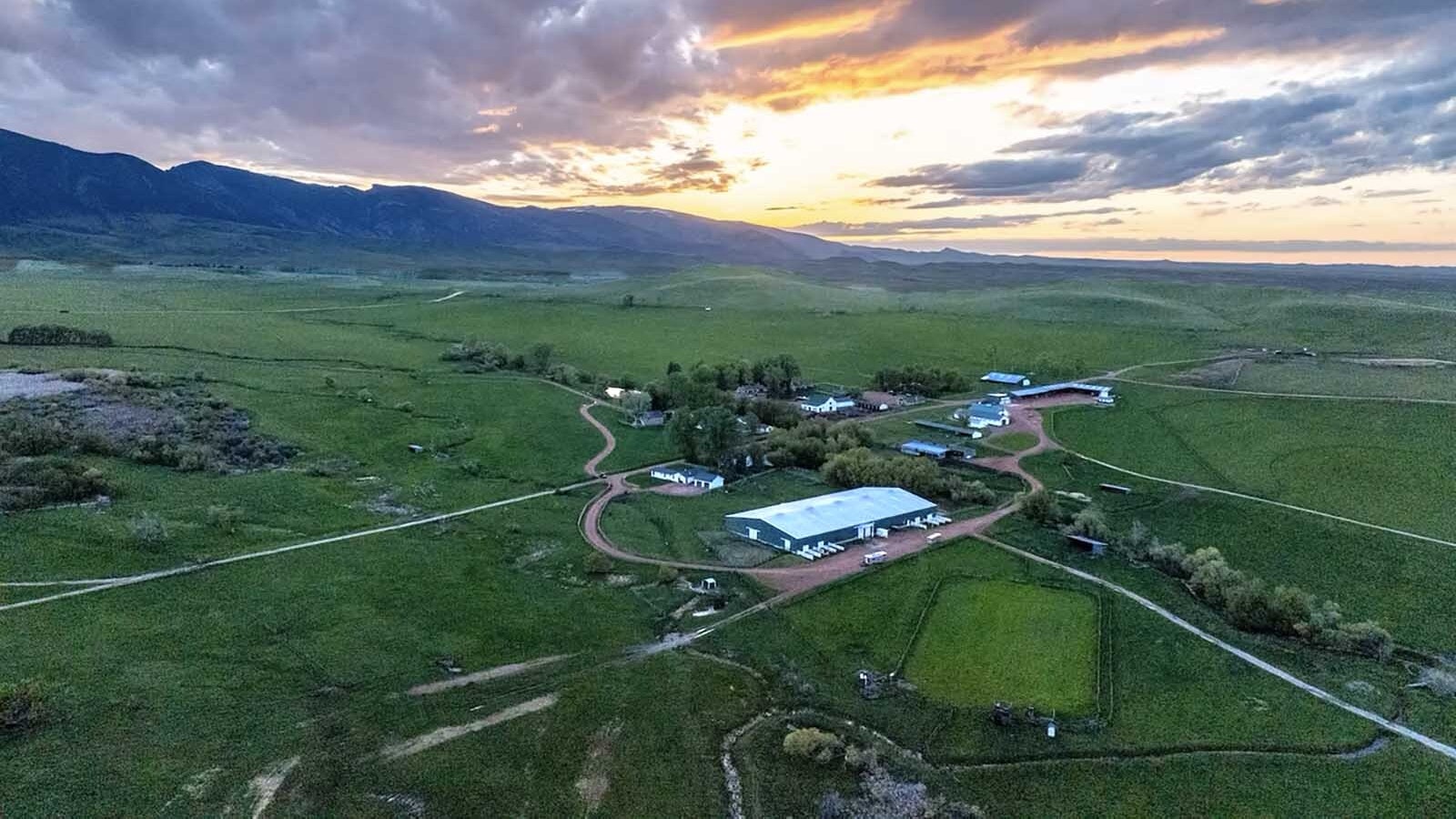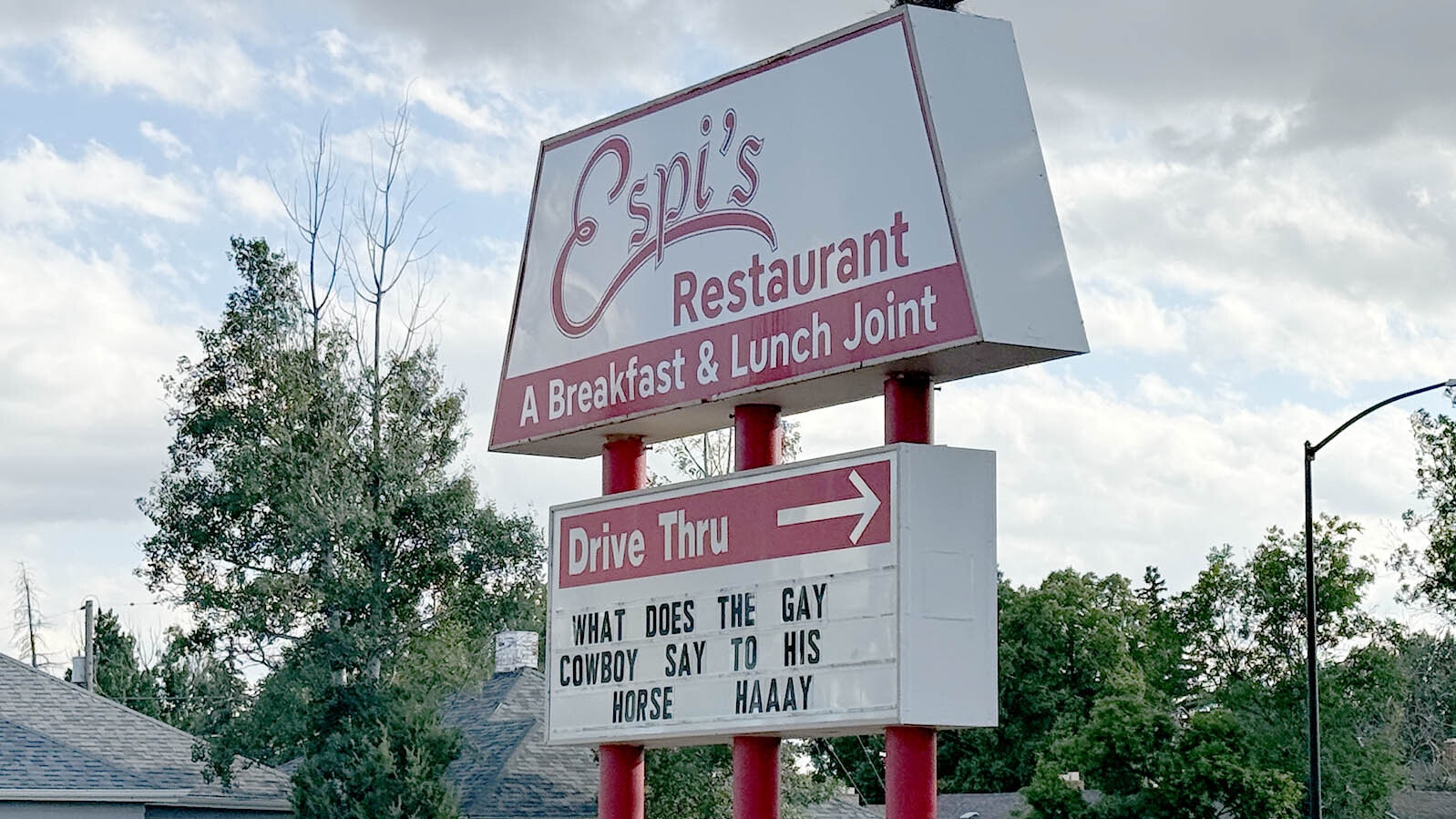As the world grapples with how to deal with climate change, a research team in Australia believes it’s found a solution: low-emission cattle.
In a study published in the journal Climate, researchers suggest cattle could be bred to produce less methane, thus reducing greenhouse gas emissions.
In summary, they conclude that the cows of the future can and should fart less than today’s ozone-battering bovines.
“Studies have found low-emission cattle have inheritable genetic traits that can significantly reduce methane production if included in (Australian) breeding objectives,” said lead researcher Merideth Kelliher.
The researchers posit that breeding cattle specifically for a lower overall methane output is possible, but it’ll probably take a lot more for Wyoming ranchers to get behind breeding less-gassy cattle.
Full Of Hot Air
Cattle have plenty of gas in their tanks. Methane is the byproduct of standing around chowing down hay and forage all day long. It’s just part of the deal; people love how delicious cows are, as well as the other products they produce. But some argue their digestive processes and manure decomposition is destroying the planet.
Selective breeding is essential in modern-day agriculture. But it’s not a one-size-fits-all approach, something Wyoming ranchers know all too well.
And there are plenty of other contributors to climate change and greenhouse gas emission that are much more serious and impactful that flatulent cattle, Wyoming ranch industry experts say. Besides, there are many other factors ranchers have to consider for raising cattle besides their methane emissions.
“Every rancher selects slightly different attributes among the 20,000 different things that they look for,” said Brett Moline, director of Public and Governmental Affairs for the Wyoming Farm Bureau Federation. “Your goal is to produce a good-quality meat product.”
Since each operation is different, ranchers look for cattle uniquely suited to thrive where they’ll be living. A trait that might be immensely beneficial for cattle in one environment could be detrimental on another ranch, even if it’s in the same state.
Moline said Wyoming ranchers look for cattle adapted to life in high elevations, ensuring they can breathe and move efficiently. They also tend to favor cattle with resistance to “brisket disease,” where cattle not adapted to high elevations can die of heart failure when living about 6,000 feet.
“That's a big selection technique here in the high-elevation parts of Wyoming,” he said. “You hope to get 10-12 years out of a mama cow. If their structures are bad, and you can only get three or four years out of them, they're not as good as the other animals. The ultimate goal is to produce a good-quality carcass from those animals.”
Cattle have been selected for bone structure, marbling, milk production, muscle tone,\ and many other factors. But could cows be chosen by the frequency and ferocity of their flatulence?
Zero-Sum Game
If cattle can be selectively bred for milk or meat production, there’s probably a way to breed a lineage of less bloated bovines. But even if possible, Wyoming ranchers may still see the premise as being full of hot air.
“You could get a cow with zero emissions,” Moline said. “But if the meat product is worthless, what good is it doing? You can't sacrifice low emissions for good quality meat.”
Selective breeding can be a zero-sum game. Moline cautioned that, as has happened in the past, favoring the lineage of one trait will likely be to the detriment of others.
“The ultimate goal of selective breeding in cattle is the highest-quality meat,” Moline said. “If cattle are selectively bred for their lower methane outputs, that could sacrifice the quality of the product.”
In the 1970s and 1980s, the cattle industry adopted a “bigger is better” philosophy. Cattle were selectively bred to favor sheer bulk, and many cattle ballooned from 900 pounds to over 1,200 pounds.
Ultimately, they learned that bigger wasn’t entirely better. The increased size contributed to a decline in the quality of their meat.
In another example, Moline said cattle bred for better milk production also led to bigger, stronger calves. The tradeoff was increased difficulty in getting those heifers pregnant.
“That’s where the trick comes in,” he said. “You must keep the output and the overall package in mind and not make big swings back and forth. You tend not to make big swings.”
War On Cow Burps
The study isn’t the first examination at the methane emissions of cattle. Last November while in Wyoming for the Western Governors’ Association meeting in Jackson, U.S. Secretary of Agriculture Tom Vilsack presented a defense of a Biden administration plan to fight climate change by targeting the methane in cow belches.
Last fall, a U.S. senator from California proposed a amendment to the Farm Bill that would have incentivized ranchers to change the pooping habits of their cows.
It proposed to reduce greenhouse gas emissions by putting cattle on pasture instead of in corals with concrete floors, and to reduce the amount of water used to flush the floors of milking parlors.
And in Ireland and other European Union countries, ranchers are being forced to kill hundreds of thousands of cattle to meet climate change goals, something U.S. Rep. Hariet Hageman warned could happen in the United States if some had their way.
Fart In The Wind?
If cattle are selectively bred to produce less methane, it will be driven by an earnest attempt to counter climate change. The politics of climate change are globally divisive, particularly in the agricultural regions of the United States.
Wyoming ranchers could refuse to consider a future of climate-friendly cattle on principle. However, politics tends to take a backseat to profitability, Moline said.
If a cow is selectively bred for high-quality meat and a high-altitude lifestyle also happens to be marginally less gassy, ranchers in Wyoming and across the West might eagerly embrace it, Moline said, adding that any potential future for low-emission cattle in Wyoming will be decided by dollar signs, not party lines.
“The ultimate goal is to produce a good-quality cut of meat,” he said. “That's what we get paid for. (Low-emission cattle) is something that we might be able to incorporate, but it's not going to happen overnight.”
Jim Magagna, executive vice president of the Wyoming Stock Growers Association, said he wasn’t familiar with the Australian study on the future of low-emission cattle. He also is concerned with how selective breeding for methane output might impact other desirable traits in beef cattle.
“If there are breeding techniques that can help with that, that’s fine,” he said. “But you’d have to weigh those against the impacts on the quality of meat produced and the efficiency and performance of the cattle, along with many other things.”
As for combating climate change, Magagna doesn’t dismiss the merits of the concept in Australia. But he believes the United States already keeps its cow gas under control.
“Our methane emissions from cattle are so much smaller than anywhere else in the world,” he said. “I don’t see that as something that is needed or necessarily beneficial at this time.”
Andrew Rossi can be reached at arossi@cowboystatedaily.com.





